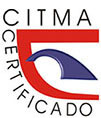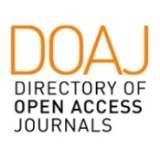Narrating Cuba: The Chronicles of Manuel Serafín Pichardo at the World’s Columbian Exposition (1893)
Keywords:
Cuba, World’s Columbian Exposition, national identity, La Ciudad Blanca, discourse analysisAbstract
Introduction: This article analyzes the Cuban national narrative that emerges from the book La Ciudad Blanca, by the Cuban journalist and intellectual, Manuel Serafín Pichardo. The book constitutes a collection of chronicles that illustrates Pichardo's visit to the Chicago Columbian Exposition, which took place in 1893.
Methods: The contents of the book are analyzed through Critical Discourse Analysis, situating the construction of national identity as the result of a dialogic practice between the Cuban narrator and the encounter with the US American «other».
Results: Through a process of negotiation with the hegemonic postulates of the fair, by which the United States traces itself as the new imperial power, Cuban identity is constructed as essentially agricultural and independent, capable of belonging to the concert of the «civilized» world.
Conclusions: The discourse of Cubanness that Pichardo exhibits in his chronicles is a result of a process of negotiation of the place that Cuba ought to occupy in modernity, reflecting practices of submission and resistance to the dominant ideologies circulating at the fair.
Downloads
References
BENEDICT, B. (1991). International Exhibitions and National Identity. Anthropology Today, 7(3), 5–9. https://doi.org/10.2307/3032792
BENNETT, T. (2013). The Birth of the Museum: History, Theory, Politics. Routledge.
Blanton, C. (2002). Travel Writing. Routledge.
BÖGER, A. (2010). Envisioning the Nation: The Early American World’s Fairs and the Formation of Culture. Campus.
BOONE, M. E. (2011). Marginalizing Spain at the World’s Columbian Exposition of 1893. Nineteenth Century Studies, 25: 199–220.
BUONOMO, L. (2014). Showing the World: Chicago’s Columbian Exposition in American Writing. In G. Abbattista (Ed.), Moving Bodies, Displaying Nations National Cultures, Race and Gender in World Expositions Nineteenth to Twenty-first Century. Edizioni Università di Trieste: 21–38. https://www.openstarts.units.it/handle/10077/10422
CILLIA, R., REISIGL, M., & WODAK, R. (2016). The Discursive Construction of National Identities. Discourse & Society, 10(2), 149–173. https://doi.org/10.1177/0957926599010002002
CLARK, K. (1998). The Redemptive Work: Railway and Nation in Ecuador, 1895-1930. Rowman & Littlefield.
CRUZ-TAURA, G. (1998). Annexation and National Identity: Cuba’s Mid-Nineteenth-Century Debate. Cuban Studies, 27: 90–109.
DOMOSH, M. (2002). A ‘Civilized’ Commerce: Gender, ‘Race’, and Empire at the 1893 Chicago Exposition. Cultural Geographies, 9(2): 181–201. https://doi.org/10.1191/1474474002eu242oa
FLYNN, J. J. (1893). The Official Guide to the World’s Columbian Exhibition. Chicago Guide Corporation.
GEPPERT, A. (2018). World’s Fairs [Text]. European History Online (EGO); IEG(http://www.ieg-mainz.de). http://ieg-ego.eu/en/threads/crossroads/knowledge -spaces/alexander-c-t-geppert-worlds-fairs
HERNANDEZ, J. (2011). The World of 1898: The Spanish-American War. Hispanic Division, Library of Congress). https://www.loc.gov/rr/hispanic/1898/hernandez.html
LÓPEZ-OCÓN, L. (2002). La América Latina en el escenario de las exposiciones universales del siglo XIX. https://digital.csic.es/handle/10261/84564
MACDONALD, S. (2010). Exhibitions of Power and Powers of Exhibition: An Introduction to the Politics of Display. In S. MACDONALD (ED.), The Politics of Display: Museums, Science, Culture: 1–24. Routledge.
OSTERHAMMEL, J. (2014). The Transformation of the World: A Global History of the Nineteenth Century (P. CAMILLER, TRANS.). Princeton University Press.
PADDON, A. R., & Turner, S. (1995). African Americans and the World’s Columbian Exposition. Illinois Historical Journal, 88(1): 19–36.
PICHARDO, M. S. (1894). La Ciudad Blanca: Crónicas de la Exposición Colombiana de Chicago. Biblioteca de El Figaro.
PRATT, M. L. (2008). Imperial Eyes: Travel Writing and Transculturation. Routledge.
RODRÍGUEZ, M. (2014). Cuba: el advenimiento de la «República» en el periódico La Lucha, 1902. Latinoamérica, 58: 181-203.
RYDELL, R. (1984). All the World’s a Fair: Visions of Empire at American International Expositions, 1876-1916. University of Chicago Press.
SCHUSTER, S. (2018). The World’s Fairs as Spaces of Global Knowledge: Latin American Archaeology and Anthropology in the Age of Exhibitions. Journal of Global History, 13(1): 69–93. https://doi.org/10.1017/S1740022817000298
SMITS, K., & JANSEN, A. (2012). Staging the Nation at Expos and World’s Fairs. National Identities, 14(2): 173–188. https://doi.org/10.1080/14608944.2012.677817
TENORIO-TRILLO, M. (1996). Mexico at the World’s Fairs. University of California Press.
VALLEJO, C. (2004). Writing the World and the Female Self: A Cuban Woman’s Perspective of the Paris (1889) and Chicago (1893) World Expositions. Decimonónica, 1(1): 113–127.
VILELLA, O. (2004). An «Exotic» Abroad: Manuel Serafin Pichardo and the Chicago Columbian Exhibition of 1893. Latin American Literary Review, 32(63): 81–98. JSTOR.
WHITFIELD, S. J. (2014). Frontiers of the World’s Columbian Exposition. In L. HOLLEGREEN, C.
CEARSE, & R. ROUSE (EDS.), Meet me at the Fair: A World’s Fair Reader: 83–95. ETC Press.
WODAK, R., & MEYER, M. (2009). Critical Discourse Analysis: History, Agenda, Theory, and Methodology. In R. Wodak & M. Meyer (Eds.), Methods for Critical Discourse Analysis: 1–33. Sage.
YENGOYAN, A. (1994). Culture, Ideology and World’s Fairs. In R. RYDELL & N. GWINN (EDS.), Fair Representations: World’s Fairs and the Modern World. VU University Press.
Downloads
Published
How to Cite
Issue
Section
License
Copyright (c) 2023 Erika Rosado Valencia

This work is licensed under a Creative Commons Attribution-NonCommercial 4.0 International License.
Usted es libre de:
Compartir — copiar y redistribuir el material en cualquier medio o formato
Adaptar — remezclar, transformar y construir a partir del material
La licenciante no puede revocar estas libertades en tanto usted siga los términos de la licencia
Bajo los siguientes términos:
Usted es libre de:
Atribución — Usted debe dar crédito de manera adecuada, brindar un enlace a la licencia, e indicar si se han realizado cambios. Puede hacerlo en cualquier forma razonable, pero no de forma tal que sugiera que usted o su uso tienen el apoyo de la licenciante.
NoComercial — Usted no puede hacer uso del material con propósitos comerciales.
No hay restricciones adicionales — No puede aplicar términos legales ni medidas tecnológicas que restrinjan legalmente a otras a hacer cualquier uso permitido por la licencia.




















